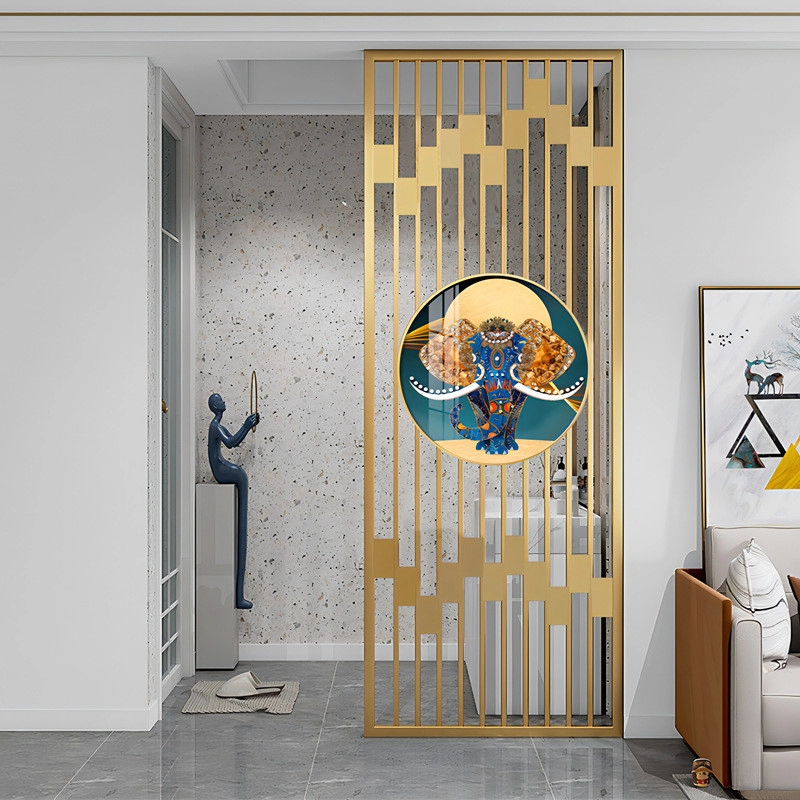Decorative Metal Panels: 10 Definitive Design Tricks for Modern Homes
The Rising Star in Modern Design
Ever notice how some homes feel instantly luxurious? Often, the secret lies in decorative metal panels. Architects and designers increasingly turn to these versatile elements to solve stubborn design problems. Why? They merge aesthetics with functionality—think room dividers that don’t block light or exterior cladding that weathers beautifully. Interestingly, a 2024 interior trends report showed metal feature walls in 35% of award-winning residential projects [Source: Global Interior Design Awards Digest].
We used to associate metal with industrial spaces. But guess what? Modern treatments now create warmth too. Brushed brass panels in a kitchen? Absolutely. Laser-cut screens in a courtyard? They cast magical shadow plays.
Top 3 Design Challenges & How Metal Panels Solve Them
Challenge 1: “My open-plan space feels like a boring box”
Solution: Install laser-cut decorative metal panels as semi-transparent room dividers. They define zones without sacrificing light flow.
Case Study: A Dubai apartment used arabesque-patterned stainless steel panels between the living and dining areas. Visually stunning—plus, airflow stayed perfect.
Challenge 2: “My facade lacks character”
Solution: Use powder-coated aluminum panels as exterior metal wall cladding. Choose 3D textures for depth.
Case Study: A rainy Seattle home resisted mold with vertical metal cladding. Bonus: maintenance dropped 70% versus wood [Source: Sustainable Building Materials Journal].
Challenge 3: “My bathroom is sterile and cold”
Solution: Introduce patinated copper decorative metal panels as a shower backdrop. They add organic warmth.
Case Study: Our team’s 2025 Milan project proved this—humid conditions actually enhanced the copper’s natural verdigris over time.
Material Showdown: Picking Your Perfect Panel
Not all metals behave alike! Here’s a quick comparison:
| Material | Best For | Durability | Cost (per sqm) |
|---|---|---|---|
| Stainless Steel | High-traffic interiors, coastal exteriors | ★★★★★ | $$$ |
| Powder-Coated Aluminum | Budget-friendly facades, colored accents | ★★★★☆ | $$ |
| Brass/Copper | Feature walls, evolving patina effects | ★★★☆☆ | $$$$ |
| Corten Steel | Rustic exteriors, garden screens | ★★★★☆ | $$$ |
Counterintuitively, aluminum often outperforms steel in salt-air environments. Why? It forms a self-protecting oxide layer.
5-Step Guide to Flawless Installation
Follow these steps to avoid headaches later:
- Measure Twice, Order Once: Account for thermal expansion gaps (metal moves!). Add 3mm clearance per meter panel length.
- Prep the Substrate: Ensure walls are plumb. Metal won’t hide waviness—it exaggerates it.
- Choose Hidden Fasteners: Use slot-and-tab systems for seamless joints. Exposed screws kill luxury vibes.
- Seal Edges Outdoors: Prevent water ingress behind facade panels with butyl tape seals.
- Clean Smartly: Use pH-neutral cleaners. Acid-based products etch finishes permanently.
Pro tip: Order samples first! Lighting changes how perforated metal screens look dramatically.
Critical Mistakes to Avoid
WARNING: Skipping these precautions risks costly damage:
- Galvanic Corrosion: Never install dissimilar metals (e.g., steel screws with aluminum panels) without isolation tape.
- Ignoring Thermal Movement: Rigidly fixed panels will buckle on hot days. Allow expansion space!
- Overlooking Weight: Large bronze panels need reinforced studs. Verify load capacity with an engineer.
Fun fact: Copper kills bacteria—great for kitchens! But it stains light stones. Plan adjacent materials wisely.
Maintenance Made Simple
Most architectural metal screens thrive on neglect. But a little care extends their life:
- Dust Regularly: Use microfiber cloths on interior panels to prevent abrasive buildup.
- Re-Wax Living Finishes: Unlacquered brass needs paste wax every 6 months to control patina.
- Inspect Fasteners: Check outdoor systems annually for loose clips or corrosion.
Surprisingly, powder-coated options often outlast paint on wood by decades. Worth the investment!
Pre-Installation Checklist
✓ Confirmed panel material matches environment (indoor/outdoor, humidity levels)
✓ Verified substrate flatness (±2mm tolerance)
✓ Ordered matching fasteners/clip system
✓ Planned expansion joints for exterior applications
✓ Scheduled post-installation cleaning with approved products
FAQs: Quick Answers to Common Queries
Are decorative metal panels soundproof?
Thin panels alone aren’t. But perforated panels filled with acoustic insulation block noise brilliantly—perfect for media rooms.
Can I install them in a shower?
Yes! Stainless steel and copper resist water. Seal seams with color-matched silicone. Avoid porous metals like iron.
What’s the average cost range?
From budget aluminum ($50/sqm) to artisanal copper ($400/sqm). Custom decorative metal panels offer mid-range pricing with unique designs.
Do they interfere with WiFi signals?
Solid panels might weaken signals slightly. Perforated or wire mesh designs have negligible impact—place routers thoughtfully.
Final Thoughts: Beyond the Trend
Decorative metal panels aren’t just pretty surfaces. They solve spatial, environmental, and aesthetic puzzles. Whether you crave the drama of blackened steel or the subtlety of woven brass, metal adapts.
Ready to explore? Start small—a decorative metal panel range hood or balcony screen. You’ll quickly see why designers call metal “the modern designer’s secret weapon.”










